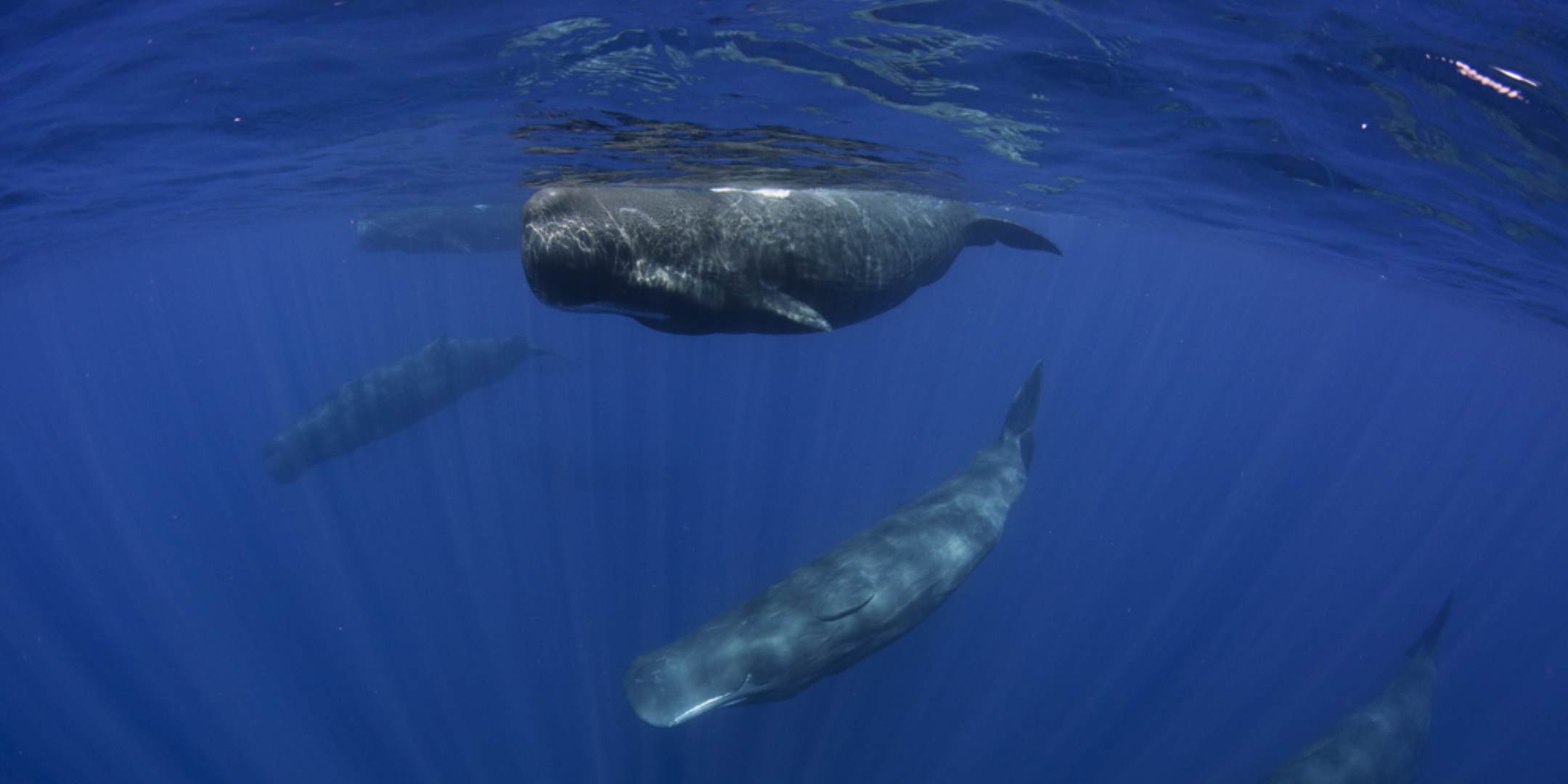
Whales and marine ecosystems
by Dr Stephen Nicol
When ships first penetrated the Southern Ocean, seafarers were amazed by the abundance of wildlife, particularly whales. An account from 1928 highlights a scene that was swiftly to disappear: ‘Whales’ backs and blasts were seen at close intervals from quite near the ship, and from horizon to horizon … the sea was swarming with Euphausia [krill]’. People imagined that the waters around Antarctica had special properties (and they do), but maybe the most special of these was their late discovery – and hence exploitation. Perhaps all the world’s oceans were like this before the large animals were systematically hunted and then eliminated, but because this happened hundreds of years ago, there was no memory of what the oceans used to look like.
Log of whaling barque 'Terror' by Captain William Henry Downes. This vividly-illustrated diary gives a lively account of a 10-month whaling voyage from Sydney into the Pacific Ocean in 1846 and 1847. ANMM Collection
A teeming ocean
There are many accounts written by explorers, fishermen, whalers and naturalists describing what they found in the oceans throughout the course of history. Until recently, most of these accounts were viewed with a grain of salt, as old wives’ tales and exaggerations. But scientists and historians have been painstakingly assembling old records and a coherent picture is beginning to emerge—the oceans of the world used to teem with life both big and small and what we see now is only a pale shadow of the thriving ecosystems that existed before large-scale fishing and sealing commenced. Genetic studies back up these conclusions, suggesting that there were vast populations of whales in the North Atlantic but that these were systematically destroyed over hundreds of years.
It took the Industrial Revolution to allow the wholesale slaughter of fish and whales—motorised vessels and vast factories allowed efficient and rapid disposal of the catches from the 19th century onwards. But even before this, populations of whales, seabirds and seals had been hunted unsustainably. Steller’s sea cow went extinct in the North Pacific by 1768, northern right whales were almost exterminated in the 19th century, and the dodo, which disappeared around 1690, has become a symbol of extinction. Despite this evidence, even learned scientists believed the oceans were inexhaustible. T H Huxley, Darwin’s great champion, unwisely opined in 1883: ‘I believe, then, that the cod fishery, the herring fishery, the pilchard fishery, the mackerel fishery, and probably all the great sea fisheries, are inexhaustible’. Such statements indicate the degree of ignorance that existed concerning the functioning of marine ecosystems—and to some extent this state of ignorance continues to this day.
A complex underwater world
The marine ecosystem is a three-dimensional fluid world that land-based humans find difficult to understand. Much ocean life is microscopic and that which is visible we can see only fleetingly. Light diminishes rapidly in the ocean, so our eyes, which are our main organs for investigating the world, are of limited use. Most of the ocean is remote, dark, cold and subject to unimaginable pressure, and these features make investigating underwater life more difficult still. To complicate things even further, the ocean swirls and churns in a complicated series of currents and upwellings that move the plants and animals around constantly. It is no wonder that the processes that generate life in the ocean are so poorly understood.
Phytoplankton, the foundation of the oceanic food chain. The National Oceanic and Atmospheric Administration
In the ocean the food chain starts with phytoplankton. These unicellular microscopic plants float in the upper hundred or so metres—only a tiny fraction of the water column, which can extend to 10,000 metres in places. These algae are eaten by a vast menagerie of herbivores that range in size from unicellular protozoa to large schooling krill that can reach a length of six centimetres. In turn, these animals are consumed by a variety of creatures, such as fish, squid, seabirds, seals and whales. Sperm whales feed high up in the food chain on large carnivorous squid and fish, while baleen whales, such as humpbacks and blues, eat the smaller, mainly herbivorous krill. This short food chain is highly efficient and has allowed whales to become the largest animals that have ever lived.
Baleen whales can exploit krill, which are thousands of times smaller than themselves, because they have evolved to feed on the vast swarms of krill that occur in the richer parts of the ocean. These aggregations can stretch for up to 20 kilometres and can contain over a million tonnes of krill in densities of more than 10,000 animals in every cubic metre—the largest concentrations of animal life on earth.
Sperm whales are marine predators, eating prey such as fish and squid. Image: SHANE GROSS/SHUTTERSTOCK
The highly efficient food chain is reflected in the life cycle of the great whales. A female blue whale, which can reach a weight of 120 tonnes and grow to a length of 30 metres, feeds for only six months of the year, yet it reaches maturity in only five years and can produce a 7-metre, 2.5-tonne calf every two to three years. Every day a newborn blue whale drinks 200 litres of milk, which has nine times the fat content of human milk. This enables the calf to double in size in just six months, enough to take on a migration of thousands of kilometres. Contrast this to the largest land animal, the elephant, which weighs up to 12 tonnes, reaches maturity at nine to 12 years, has a 22-month gestation period and produces a 120-kilogram calf every five years. The short food chain and the nutritional value of krill contribute to the remarkable productivity of baleen whales.
Krill exist in vast quantities in the ocean, and are a major food source for baleen whales. Image: AQUAPIX/SHUTTERSTOCK
